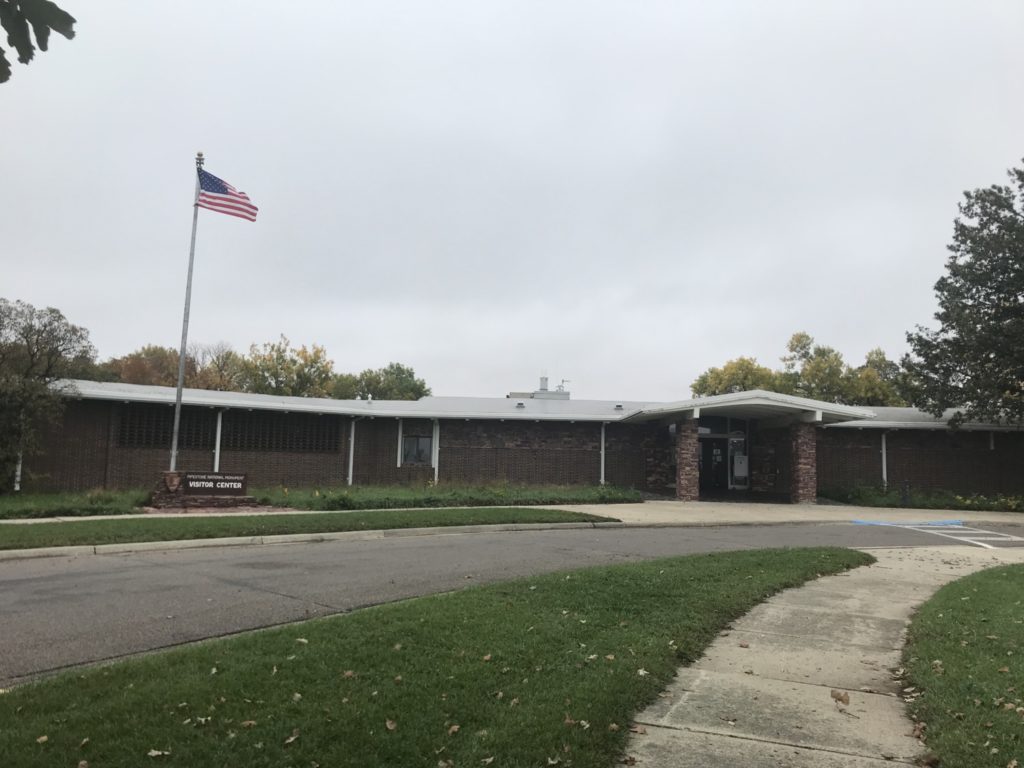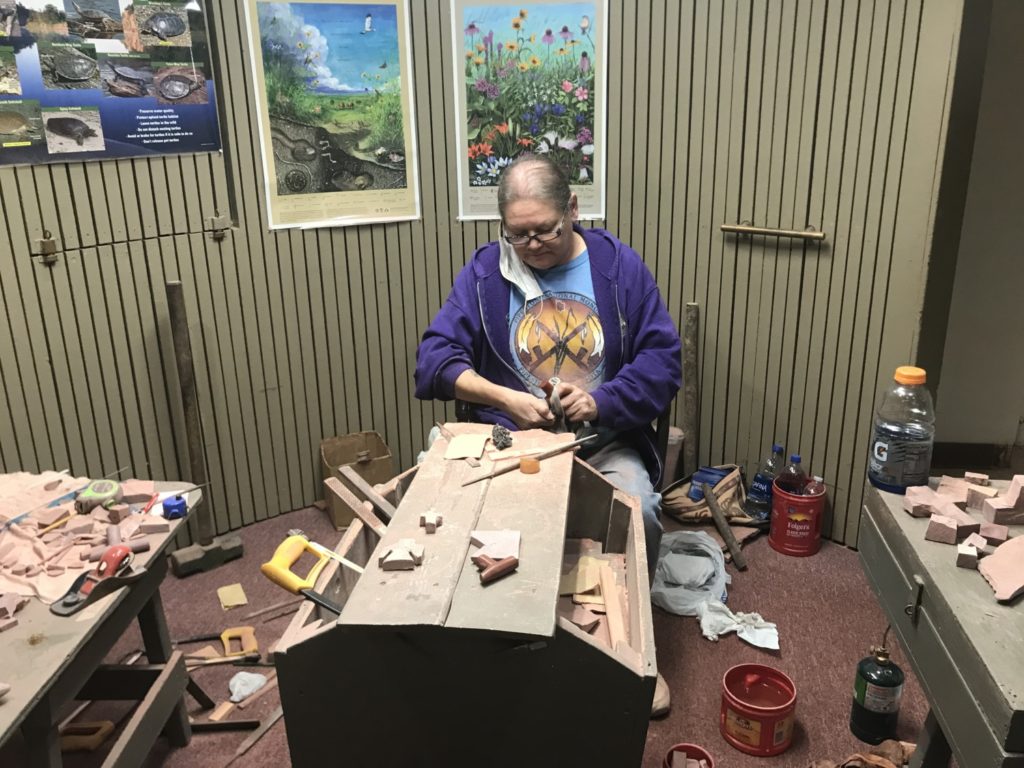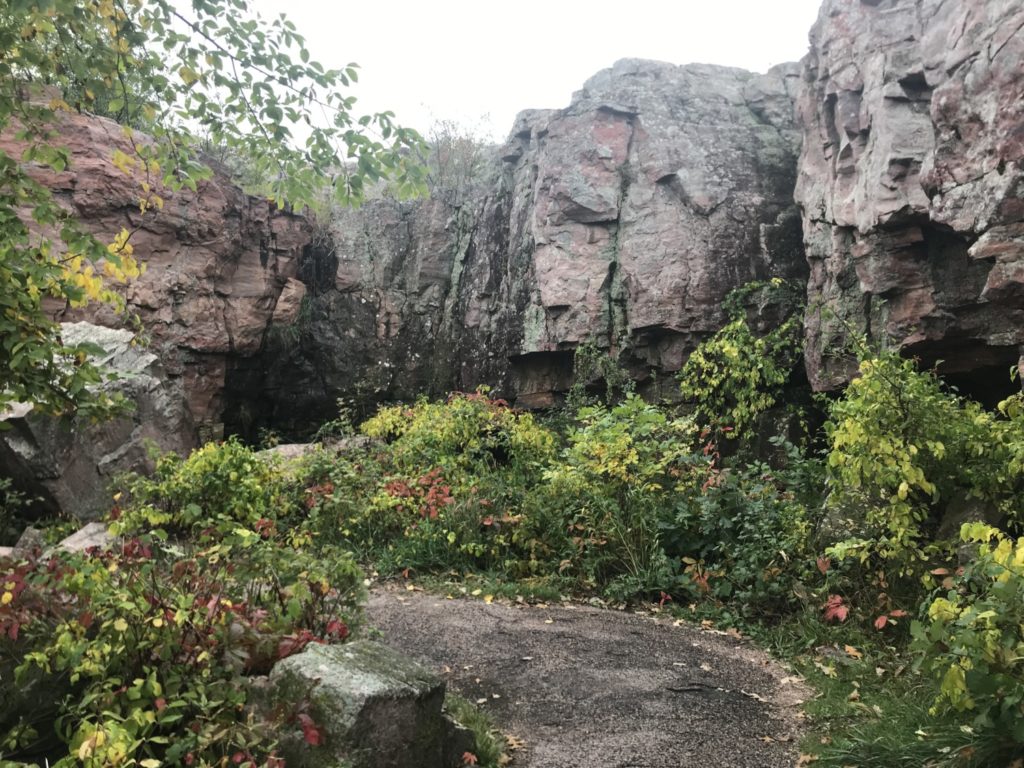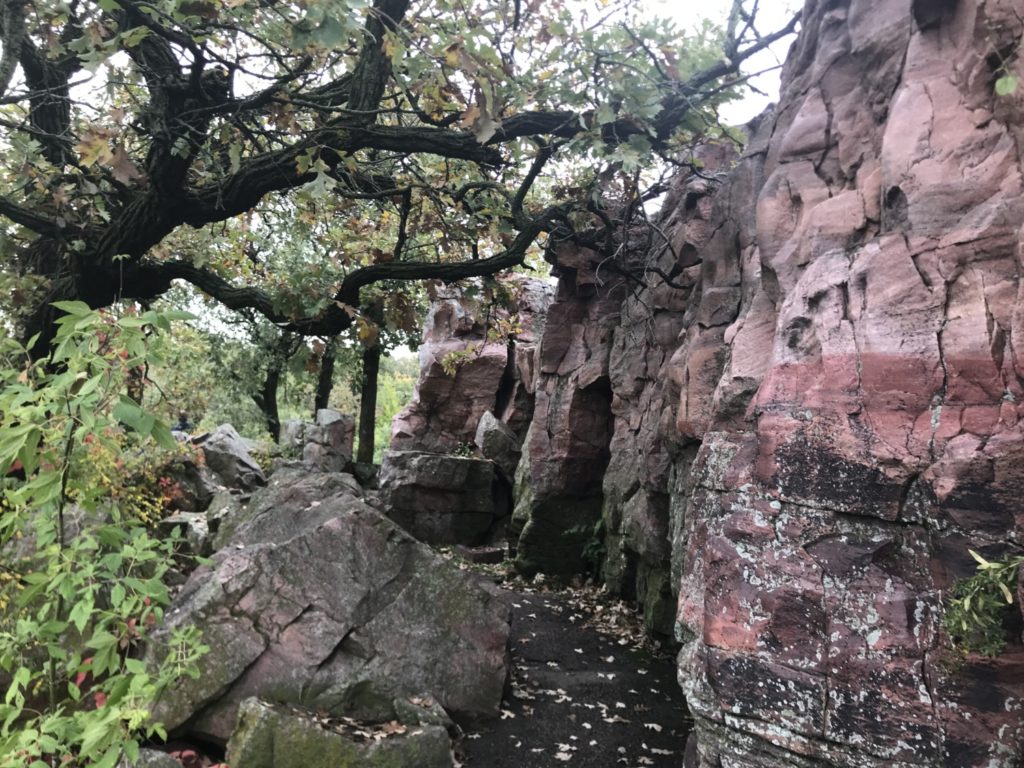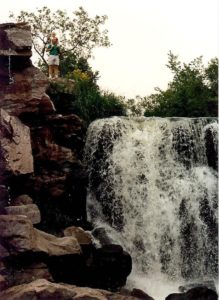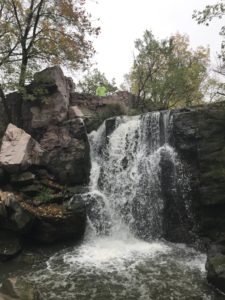As Tom and I continued our trip back to Ohio, we stopped at Pipestone National Monument in Minnesota. We went to Pipestone once before, in 1990 when John was 2. I’m glad to say it hasn’t changed much, although it was interesting how little we remembered about our previous visit.
Pipestone National Monument is notable because it tells the story of the traditional quarrying and carving of Native American pipes made out of pipestone. Pipestone is a durable, yet soft, stone that ranges in color from mottled pink to brick red. This southwest area of Minnesota was controlled by the Dakota Sioux and they controlled the quarries from 1700 on. Pipestone was available to other tribes through trade with the Dakota Sioux.
Over time the Pawnee and Sioux became known as master effigy carvers of the pipestone. Effigy pipes are shaped like people or animals. Another popular pipe shape was the t-shaped calumet. Calumets became widely known as peace pipes because they were the pipes that non-Indians encountered at treaty ceremonies.
The Native Americans are still allowed to quarry for pipestone. They use the items carved from pipestone in religious ceremonies and sell their carvings. The Yankton Sioux secured the one-mile square quarry in an 1858 treaty. Settlers were digging into the quarry and extracting the sacred stone. In 1928 the Yankton were awarded a judicial settlement from the federal government that allowed traditional quarrying of the site for any person who is a member of a Native American tribe. In 1937 Congress established Pipestone National Monument to preserve the site.
Tom and I were surprised by the number of visitors at the site on the day we visited. It was a weekday and the weather was cool and rainy. I got my stamp and we spent some time in the museum. They were making a new park movie on the site, so Tom and I watched a couple of other videos being shown in the museum. The most interesting showed a father teaching his son how to quarry the rock and prepare it for carving.
We watched a woman carving in the demonstration area of the Visitors Center. Then we walked the 3/4 mile path around the site and to the quarry. The pipestone is covered by a beautiful red quartz. The quartz is the dominant feature in the park because of the centuries of quarrying. Many of the buildings in the town of Pipestone are made out of this quartz. You can only see the pipestone when you overlook the active quarry. There is also a beautiful waterfall along the trail.
Pipestone National Monument is an interesting place to visit because of the story it tells. I’m glad there is a place where the Native Americans can carry on this tradition unhindered.


